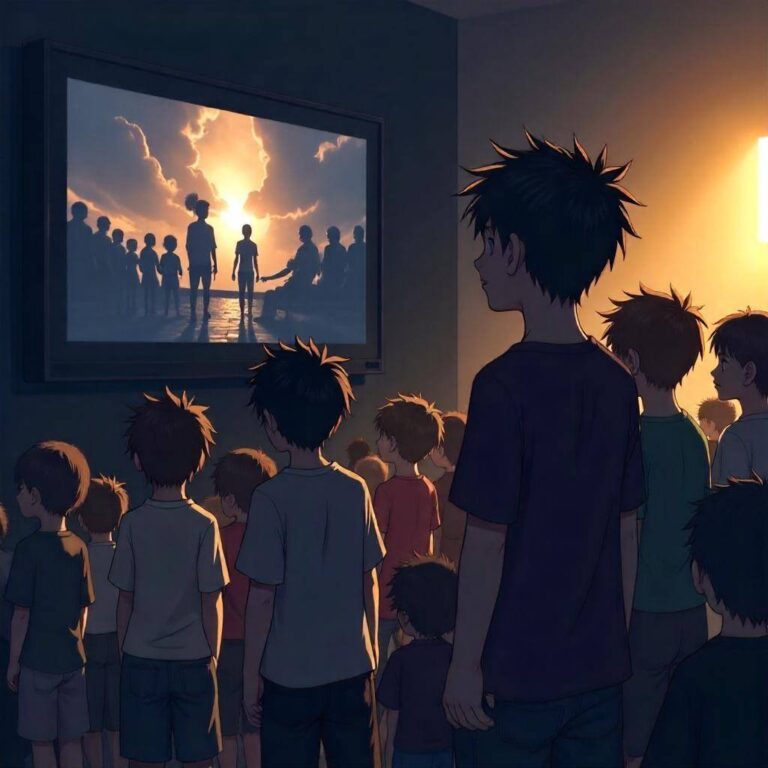Reader’s Question:
Were there any graphic scenes in Madoka Magica that would make it unsuitable for evening broadcasts? I’m curious why it’s said that it can’t be aired in the Sunday 5 PM slot. I feel like it’s much less intense compared to shows like Blood+, Code Geass, Fullmetal Alchemist, or
Jujutsu Kaisen.
Why Madoka Magica Might Not Fit the Sunday 5 PM Slot
So, let’s dive into the curious case of Puella Magi Madoka Magica—a series that, despite its seemingly cute aesthetic, has sparked quite a bit of debate about its suitability for certain broadcast time slots. Someone recently posed an interesting question about why Madoka Magica is often said to be unfit for that cozy Sunday evening 5 PM slot, especially when compared to other shows like Blood+, Code Geass, Fullmetal Alchemist, and Jujutsu Kaisen. Let me share my two cents on this!
A Trip Down Memory Lane
I distinctly remember the first time I watched Madoka Magica. I was lounging on my couch, snacks in hand, thinking I was in for a light-hearted magical girl show. You know, something akin to Sailor Moon or Cardcaptor Sakura. Boy, was I in for a rude awakening! The vibrant colors and cute character designs quickly gave way to some of the most intense emotional and psychological themes I had ever encountered in anime. As I got deeper into the series, I found myself questioning everything I thought I knew about the magical girl genre. The moment the cute characters started facing the harsh realities of their wishes, it became clear this was not your typical after-school anime fare.
Graphic Scenes and Visual Style
Now, regarding the graphic scenes that make this show a tad controversial: it’s not just the blood and gore that might raise eyebrows. Sure, the show has its moments—like when magical girls face their doom or the darker transformations that reveal the true nature of their “powers.” However, what really sets Madoka Magica apart is the psychological horror and existential dread woven throughout its narrative. In terms of visuals, the art style, heavily influenced by the creative team at Studio SHAFT, can be disorienting at times. The surreal and psychedelic elements introduced by director Akiyuki Shinbo and the art direction from Yukihiro Matsuo create an atmosphere that can genuinely unsettle viewers. I remember feeling a mix of awe and discomfort as I watched the scenes unfold. It’s like art in motion, but it can leave you feeling a bit queasy if you’re not prepared for it. What makes it even more complicated is that these scenes are open to interpretation. Some viewers might find them disturbing, while others may be intrigued by their deeper meanings. I mean, who wants to explain existential dread to a group of kids sitting down for their Sunday evening anime binge?
Timing Is Everything
As for the timing, I get it. A Sunday 5 PM slot is supposed to be family-friendly. It’s a time when kids and parents are gathering around the TV, probably looking for something light and cheerful before the week starts. Given that Madoka Magica is only one cour with 12 episodes, it doesn’t quite fit the mold for a longer series that might build toward something more palatable for that time slot. Imagine this: a child is excitedly waiting for their magical girl fix, and then suddenly, they’re faced with heavy themes of sacrifice, despair, and the harsh realities of one’s desires. That’s a lot to unpack for a young mind! Some scenes might even leave parents scratching their heads, questioning why they thought this show was a good idea.
Comparisons to Other Shows
You mentioned comparing it to Blood+ or Jujutsu Kaisen, and I see your point. Both of those shows have graphic content, but they often stick to a more straightforward action and horror narrative. They don’t delve as deep into psychological themes or moral complexities. In a way, those shows can sometimes feel more like a thrill ride—lots of action, a few jump scares, and then it’s over. Madoka Magica, however, lingers long after the credits roll. Its emotional weight and philosophical questions can lead to some intense discussions. Personally, I’ve found myself reflecting on the themes of the show days after watching an episode. It’s like an intellectual workout, and sometimes, you just want to kick back and relax with something a little less… mind-bending.
Final Thoughts
In conclusion, while Madoka Magica may not be the most graphically intense series out there, its psychological depth and unsettling visuals create a unique viewing experience that might just be too heavy for a Sunday evening. It’s a show that demands attention and contemplation, which might be better suited for a late-night binge session rather than family viewing time. So, if you’re thinking about diving into Madoka Magica, do it! Just prepare yourself for a wild ride that challenges your perceptions of good and evil, hope and despair. And maybe keep the snacks handy—you’ll need them! Until next time, happy watching!



